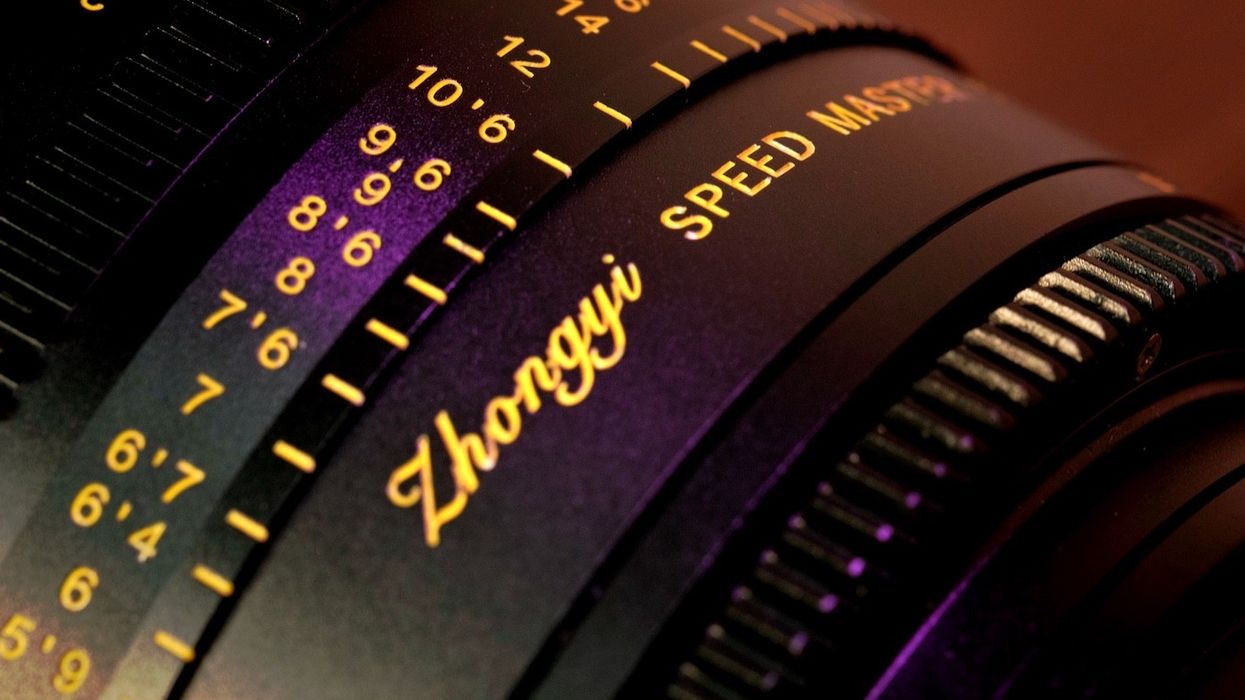This Is a Beautiful Lens with a T1 for $1,000
A T1 aperture allows for shooting in very low light, but usually, we can't afford it. With the new 50mm from Zhongyi, you can, and it looks pretty good too.

Filmmakers love wider apertures because we can't control exposure times the way still photographers can. If you don't have enough light for a still photo, you put it on a tripod and extend exposure time, and if the subject isn't moving too much, voila, exposure.
But filmmakers are usually stuck with 1/24 at minimum, and 1/60 or 1/120 (if shooting high speed) exposure times, and that isn't going anywhere anytime soon. So we need wide apertures to compensate.
However, wide-aperture lenses are usually pricey, and they usually have optical drawbacks that make them less than ideal.
I know at least one DP who regularly refuses to shoot anything more than 1 stop in from maximum, so if they rent a set of T1.4 lenses, they really shoot them at something like a T2 most of the time.
This is less true than it used to be (modern lens designs are better than ever, and there are beautiful modern T1.4 lenses you can comfortably shoot wide open), but it's something filmmakers need to think about. Especially since your footage has to be cut together. If you shoot some shots at a T1.4, and they are softer than your T2.8 shots, that is a problem.
So while we're excited about T1 lenses (work with even less light), we're also nervous.
Optical performance tends to fall apart when you get that wide. Add at an affordable price point, and we get even more nervous.
This is why the Zhongyi T1 50mm prime we got to test this summer was such a delight. It's affordable at around $1,000, available in PL and EF mounts, and opens to a T1 with minimal optical compromises.
They are there, as you can see in these charts. It's softer at the edges at T1 than even at T1.4, and definitely than T5.6. But the reality is they are small and they are liveable. For the kind of night shoots where you are typically going to want the T1, it's not a dealbreaker, but another thing to be aware of.
Before we spend much time talking about T1, it has to be said this lens looks surprisingly nice at the "normal" apertures (T2-T5.6 or so) where you spend most of your career.
Surprisingly creamy and smooth, very flattering, this is a lens that we would happily shoot for a lot of projects.
Right now there are only 35mm and 50mm in their lineup that covers full frame, but hopefully, we'll see more options coming soon.
That isn't the headline for the lens, though it could be. If they sold this lens at this price only opening to a T2 it would still be a strong contender to consider.
The headline is that T1 aperture. Here's the thing—it is noticeably softer around the edges when you open all the way up to a T1. If you look at those shots on a chart, it's just visibly softer.
But when you look at a video shot on it, does it matter dramatically? I personally didn't think it ruined my shots. I've shot high-speed lenses where it was so dramatically different at its widest aperture (WFO, for wide-fucking-open) that we never ever used it.
This isn't that dramatic. It's there, but not crushing your quality.
To me, this is a beautiful lens at a shocking price point that I would happily shoot not at a T1 all the time. I find the images smooth and creamy in a way I wasn't expecting, and I'm hopeful we'll eventually see a full lineup of cine glass from the company.
Weight is an issue. This isn't a lens that is going to fly on a Ronin RS2, but there are plenty of lenses that are going to do that just fine. This lens is meant for different things.
Considering the 3.2lb weight, the ability to mount directly to the lens would be nice for smaller cameras like the A7S3, which seems likely to be a frequent partner for the lens.

However, that amazing T1 was super useful for certain night shoot situations. It does just manage to shoot in very low light and get amazing imagery.
I would be very careful pitching a client job that depended on it, since you'll only have this and their 35mm to choose from, and if they want a long or a wide shot, you'll have to explain why you don't have the glass. And you have that softness to deal with.
There is also some chromatic aberration (see image below, the magenta/green shift in contrast) that you have to navigate if you want to do something like compositing that can make cutting a clean key an issue.
But frankly, these limitations (CA, edge softness wide open) just aren't dealbreakers for a lens at this price/performance spot.
The softness is surprisingly acceptable when shooting real subjects in a way that it isn't when shooting test charts. If you are using this for a night exterior, its most likely use case, it's not going to be distracting in most situations.
Having tested it, if I booked a job on it I might keep key performers slightly more centered than normal, but it's a very useable tradeoff considering just how amazing the low light is.
For more info, check out their site.

















